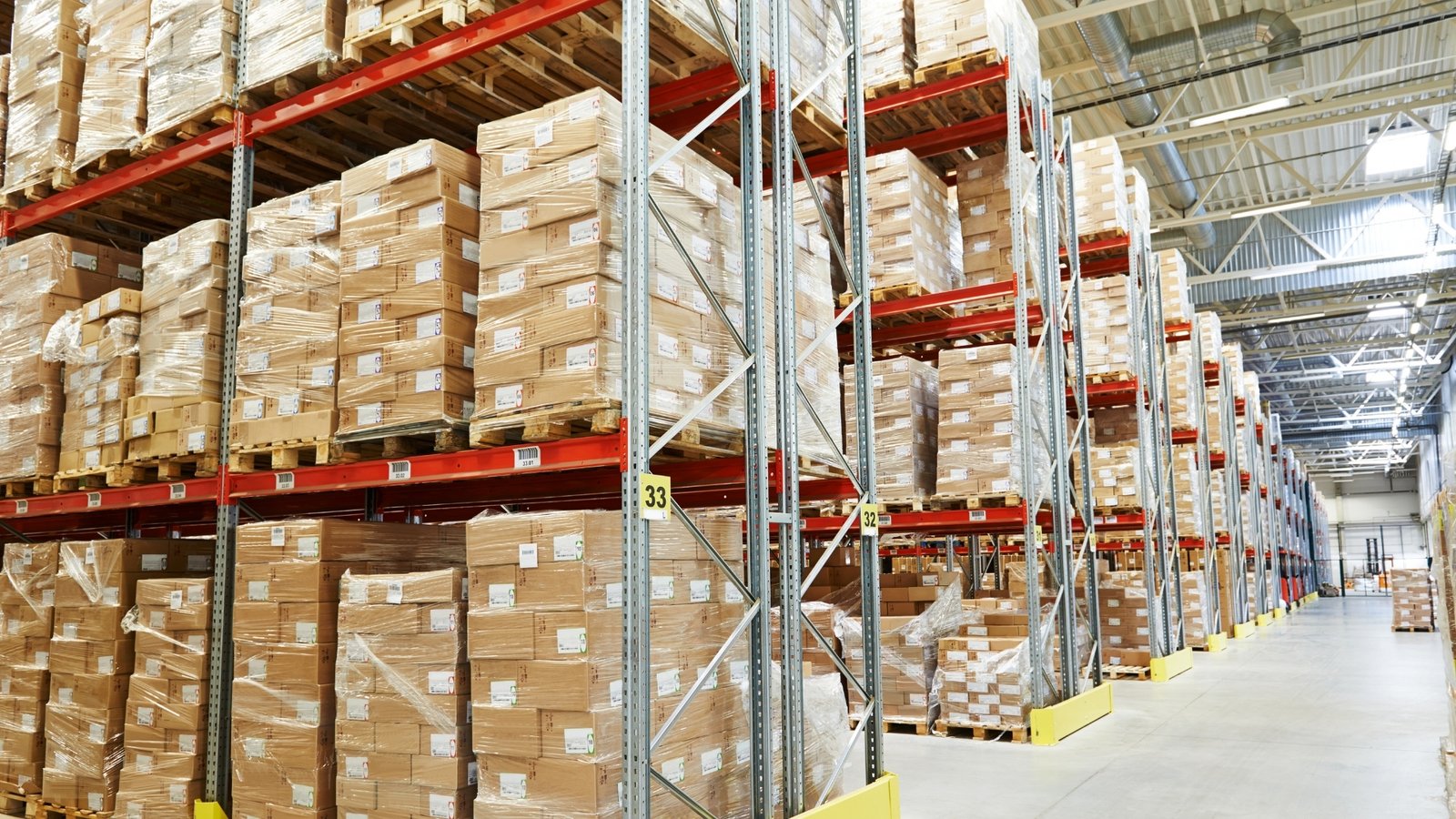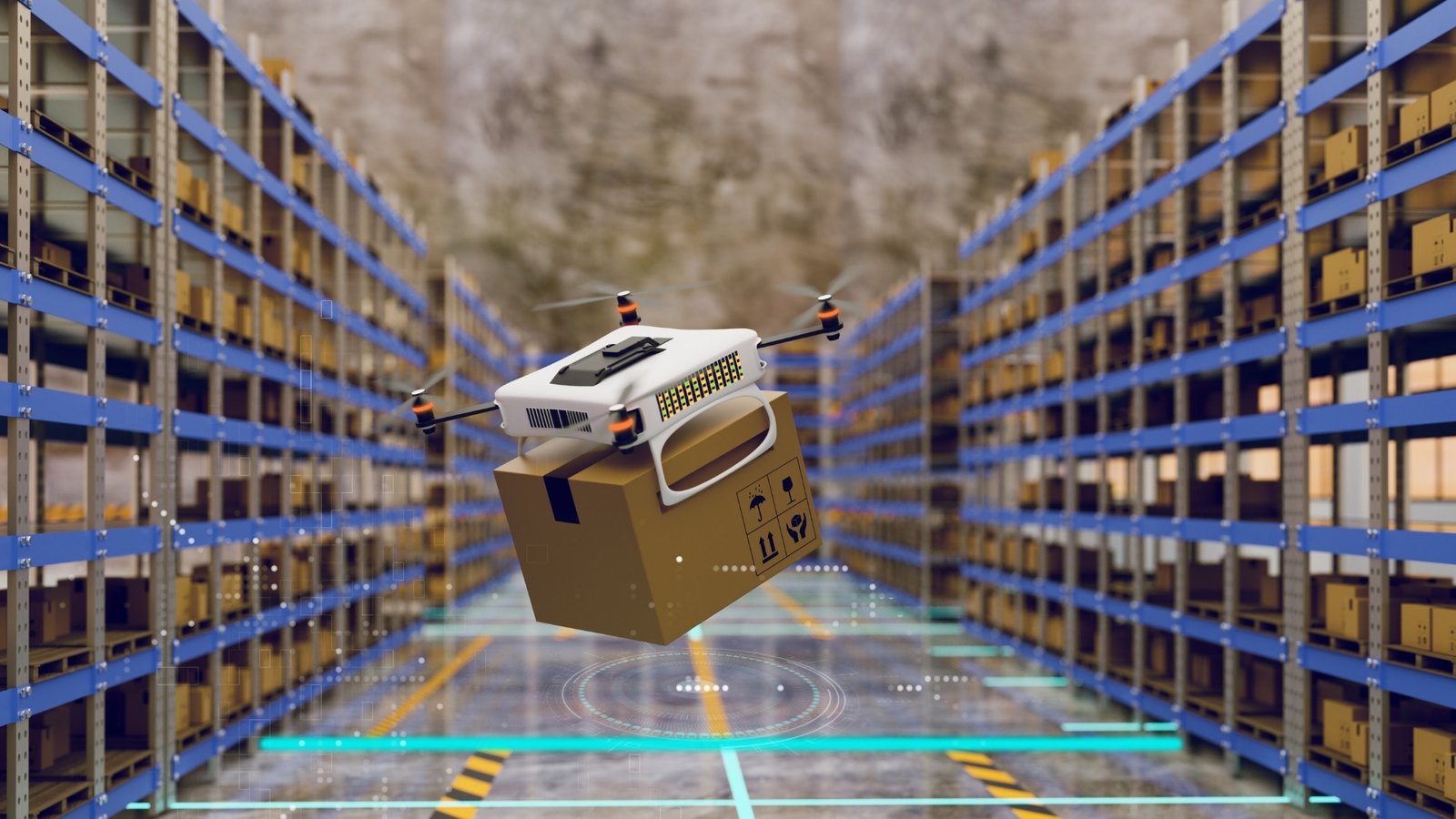Understanding Sustainable Logistics
Sustainable logistics refers to the integration of environmentally friendly practices within the logistics and supply chain management processes. In a world increasingly concerned about climate change, resource depletion, and social responsibility, sustainable logistics has emerged as a vital component of modern supply chains. This approach prioritizes the implementation of practices that minimize environmental impact, enhance social equity, and ensure economic viability.
The significance of sustainable logistics lies in its ability to address the pressing challenges facing global supply chains today. Key principles include reducing carbon emissions, optimizing resource use, and fostering local communities. Logistics companies aspire to achieve these goals by embracing innovation and utilizing technology to enhance efficiency and reduce waste. For instance, companies may incorporate renewable energy sources, such as solar and wind, to power their operations, thus decreasing their carbon footprint.
At the core of sustainable logistics are three interconnected pillars: environmental, social, and economic sustainability. The environmental pillar focuses on minimizing harmful emissions and waste through practices such as route optimization, eco-friendly packaging, and efficient inventory management. The social aspect emphasizes the ethical treatment of workers and communities affected by logistics activities, encouraging fair labor practices and local engagement. Finally, the economic pillar seeks to ensure that sustainable initiatives are not only environmentally and socially responsible but also financially viable for businesses.
In summary, understanding sustainable logistics involves recognizing its critical role in fostering a greener supply chain. By adopting practices that support environmental integrity, social responsibility, and economic development, logistics companies can contribute to a sustainable future while enhancing their operational efficiency and resilience. As businesses increasingly prioritize sustainability, understanding these principles will be essential for navigating the challenges and opportunities that lie ahead in the logistics sector.
The Importance of Green Supply Chains
In recent years, the significance of green supply chains has garnered immense attention across various industries. As businesses face mounting pressure to reduce their environmental footprint, the incorporation of sustainable practices in logistics has become a hallmark of operational excellence. A green supply chain encompasses the entire lifecycle of a product, emphasizing environmental considerations from sourcing raw materials to end-of-life disposal. This holistic approach not only benefits the planet but also drives business performance.
Statistics highlight the growing priority placed on sustainability by both companies and consumers. According to a recent survey conducted by Nielsen, 66% of global consumers are willing to pay more for sustainable brands. This consumer tendency indicates a clear link between a company’s commitment to green practices and its brand reputation. For instance, Unilever, a multinational consumer goods company, reported that its sustainable living brands grew 69% faster than the rest of its business. Such figures underscore the importance of green supply chains, as they can cultivate customer loyalty and potentially lead to increased market share.
Moreover, implementing sustainable logistics strategies can result in significant cost savings and improved operational efficiency. A case study involving Walmart demonstrated that by adopting more energy-efficient transportation methods, the company saved an estimated $1 billion annually. These proactive steps not only enhance the bottom line but also mitigate the environmental impact often associated with traditional logistics practices.
As businesses adapt to a rapidly changing marketplace, the adoption of green supply chains emerges as a crucial strategy for success. Organizations that prioritize sustainability are not only improving their brand image and fostering customer loyalty but also driving efficiencies that contribute to longer-term viability. The momentum for green logistics is strong, and companies are poised to benefit significantly from embracing these practices.
Key Sustainable Practices in Logistics
Incorporating sustainable practices in logistics is essential for reducing the environmental impact of supply chain operations. One of the foremost strategies is the adoption of eco-friendly transportation methods. Logistics companies are increasingly utilizing electric vehicles (EVs) and hybrid models for last-mile deliveries. These alternatives reduce greenhouse gas emissions and reliance on fossil fuels, leading to cleaner air quality in urban areas. Additionally, optimizing vehicle routes through advanced logistics software can minimize fuel consumption and enhance efficiency, further supporting sustainability goals.
Energy-efficient warehousing solutions also play a pivotal role in sustainable logistics. This can involve retrofitting existing structures with energy-efficient lighting systems, such as LED lights, and implementing smart building technologies that monitor energy use. Utilizing renewable energy sources, such as solar panels, can significantly lower the carbon footprint of warehouse operations. Moreover, adopting practices such as better insulation and energy-efficient heating and cooling systems contributes to reduced energy consumption.
Waste reduction techniques are another critical component of sustainable logistics practices. Implementing recycling programs and ensuring proper disposal methods for materials used in logistics can greatly decrease waste in operations. Collaborations with eco-conscious suppliers who prioritize recyclable materials can also enhance waste reduction efforts. Additionally, logistics providers are focusing on creating a circular supply chain, where products are reused, repaired, or recycled rather than disposed of, contributing to environmental preservation.
Finally, sustainable packaging options are gaining traction within the logistics sector. Companies are increasingly transitioning to biodegradable, compostable, or reusable packaging solutions to minimize plastic waste. Innovative designs that reduce the amount of material required for packaging can further contribute to sustainability goals. When companies prioritize eco-friendly packaging, they not only reduce their environmental impact but also cater to a growing market of environmentally-conscious consumers.
Technological Innovations Driving Sustainability
The advancement of technology has significantly transformed the logistics sector, enabling companies to adopt sustainable practices that are essential for fostering a greener supply chain. One of the most notable innovations is the integration of electric vehicles (EVs) within delivery fleets. By switching from traditional fossil fuel-powered vehicles to EVs, logistics companies can drastically reduce their greenhouse gas emissions and fuel consumption. As battery technology continues to improve and charging infrastructure expands, electric vehicles are becoming more viable for long-haul transportation, further enhancing sustainability efforts in logistics.
Another critical technological innovation is automation, which streamlines various logistics processes, thereby enhancing efficiency. Automated systems in warehousing, like robotic pickers and autonomous guided vehicles, reduce the labor force needed while increasing accuracy and speed in order fulfillment. By minimizing human error and optimizing workflows, these technologies allow logistics providers to operate more sustainably, improving their overall productivity and reducing waste.
Data analytics also plays an essential role in driving sustainability in logistics. With sophisticated analytical tools, companies can assess vast amounts of data related to their operations, identifying opportunities to optimize transportation routes and minimize fuel usage. For instance, using advanced algorithms, logistics providers can ascertain the most efficient delivery routes, which not only cuts down on travel distance but also leads to lower fuel consumption and reduced carbon footprints. Furthermore, predictive analytics can forecast demand fluctuations, enabling better inventory management and reducing unnecessary overstock.
Lastly, smart supply chain technologies, such as the Internet of Things (IoT) and blockchain, enhance transparency and efficiency across the entire supply chain. IoT devices track the movement of goods in real-time, offering vital data that can help in monitoring environmental conditions during transportation. Blockchain ensures secure and efficient transaction processing, which is vital for promoting sustainable sourcing and reducing waste in the supply chain. By adopting these technological innovations, logistics companies can lay the foundation for a more sustainable future.
Collaborative Approaches to Sustainability
Collaboration among key stakeholders in the logistics sector plays a vital role in advancing sustainable practices within the supply chain. By fostering partnerships that include suppliers, logistics providers, customers, and regulators, organizations can collectively implement strategies that significantly reduce environmental impacts. This collaborative approach not only enhances operational efficiencies but also paves the way for innovative solutions that address sustainability challenges.
Suppliers and logistics providers can establish shared goals that aim to minimize emissions and waste. For instance, by synchronizing transportation schedules and optimizing delivery routes, companies can significantly reduce their carbon footprint. Such collaborations encourage transparency and shared responsibilities, creating a business environment where sustainability becomes a unified objective rather than an individual endeavor. Consequently, stakeholders can leverage each other’s strengths, leading to improved resource allocation and operational performance.
Moreover, engaging customers in sustainability initiatives is equally crucial. By educating consumers about the environmental impact of their choices, businesses can empower customers to participate in sustainable logistics practices actively. This may involve promoting products with lower carbon footprints or offering incentives for opting for eco-friendly delivery options. When customers demand greater sustainability, logistics providers are motivated to respond, thereby strengthening the overall commitment to greener practices in the supply chain.
Regulators also play a significant role in shaping a sustainable logistics landscape. Through collaborative frameworks, regulatory bodies can work with industry stakeholders to develop guidelines and standards that encourage sustainable practices across the board. These regulations not only set benchmarks for emissions but also provide a supportive network to facilitate the transition towards more sustainable logistics solutions.
In conclusion, collaboration among suppliers, logistics providers, customers, and regulators fosters a robust framework for sustainable practices in logistics. By engaging in shared responsibilities and community initiatives, stakeholders can effectively advance their sustainability goals, ultimately leading to a greener supply chain.
Challenges in Implementing Sustainable Practices
As organizations strive to adopt sustainable practices in logistics, they encounter various challenges that can hinder their progress. One of the most significant barriers is the high initial cost associated with implementing sustainable technologies and practices. Investments in energy-efficient vehicles, alternative fuel sources, and advanced logistics software often require substantial capital. For many companies, especially small to medium-sized enterprises, these costs can be prohibitive, and the long-term benefits may not be immediately apparent, leading to hesitance in making necessary changes.
Resistance to change is another common obstacle that organizations face. Employees, stakeholders, and even leadership may be reluctant to alter established processes and practices. This reluctance can stem from a lack of understanding of the potential benefits of sustainability or fear of the unknown outcomes that come with new methods and technologies. To address this, organizations should facilitate training and education on the importance of sustainable logistics practices, highlighting both environmental and economic benefits to gain buy-in from all levels of the workforce.
Additionally, the lack of clear regulations regarding sustainability can complicate the decision-making process for many logistics companies. Without specific guidelines and standards, organizations find it challenging to align their practices with sustainability goals. Governments and regulatory bodies play a crucial role by establishing explicit standards that can guide businesses in adopting eco-friendly practices. Moreover, the complexity of global supply chains adds another layer of difficulty, as firms may struggle to manage suppliers’ and partners’ practices effectively.
To overcome these challenges, organizations must develop comprehensive strategies that encompass clear communication, incremental changes to practices, and ongoing investment in technology. By prioritizing education, fostering a culture of sustainability, and leveraging partnerships across the supply chain, companies can create a more resilient and sustainable logistics ecosystem.
Measuring Sustainability in Logistics
Measuring sustainability in logistics involves the assessment of various metrics and key performance indicators (KPIs) that reflect the environmental impact of logistics operations. Companies seeking to build a greener supply chain must have a clear understanding of their sustainability performance. One of the primary tools for this assessment is carbon footprint analysis, which calculates the total greenhouse gas emissions produced directly and indirectly through logistics activities. This metric not only highlights the emissions generated from transportation but also encompasses warehouse energy consumption and material handling processes.
In addition to carbon footprint analysis, organizations often employ lifecycle assessments (LCAs) to evaluate the environmental impacts associated with all stages of a product’s life, from raw material extraction to end-of-life disposal. LCAs provide a comprehensive view of how logistics decisions affect sustainability, allowing organizations to identify areas for improvement. For example, a logistics operation can analyze the emissions generated during shipping versus the procurement of materials, enabling targeted interventions to reduce impacts.
Other important KPIs include the percentage of energy sourced from renewable resources, the efficiency of packaging materials, and waste reduction metrics. Evaluating these indicators allows companies to gauge progress toward their sustainability goals effectively. Furthermore, regular tracking and reporting of these metrics simplifies the identification of trends over time, ensuring companies can adjust their strategies proactively. Engaging stakeholders in this reporting process fosters transparency and strengthens commitment to sustainability objectives, enabling long-term gains in environmental performance.
Ultimately, measuring sustainability in logistics is a multidimensional approach that requires continuous evaluation and improvement. By leveraging carbon footprint analysis, lifecycle assessments, and additional KPIs, companies can paint a clearer picture of their environmental impact, helping them to navigate towards a greener supply chain.
Case Studies of Successful Sustainable Logistics Practices
In recent years, several companies have made significant strides in integrating sustainable practices into their logistics operations, illustrating the feasibility and benefits of greener supply chain management. One notable example is Unilever, a major player in the consumer goods sector. Unilever has committed to reducing its overall carbon footprint by 50% by 2030. The company tackled sustainability by implementing energy-efficient practices in its transportation sector, such as optimizing delivery routes and utilizing alternative fuel sources like biodiesel. As a result, Unilever reported a approximately 15% reduction in transportation-related emissions, proving that sustainable logistics can also drive cost efficiency.
Another remarkable case is that of Amazon. The e-commerce giant announced its ambition to operate a net-zero carbon business by 2040. A crucial part of this commitment involves the incorporation of electric delivery vehicles into its logistics fleet. Amazon has invested heavily in these electric vehicles, aiming for a 100,000-vehicle deployment by 2030. Furthermore, the company focuses on optimizing its supply chain by employing advanced algorithms to enhance route efficiency and reduce waste. Early reports indicate a promising reduction in CO2 emissions, showcasing their potential to lead through sustainable logistics practices.
Lastly, IKEA has made substantial progress as well. The furniture retailer has established a circular supply chain by recycling materials from old furniture and integrating them back into production. This practice has not only minimized waste but also led to significant cost savings. IKEA’s initiative has informed its logistics strategy, promoting the use of biofuels and optimizing packaging to reduce transportation weight. Consequently, the company has achieved a 41% decrease in greenhouse gas emissions in its transportation network, setting a benchmark for other organizations to follow.
These case studies demonstrate that overcoming challenges in sustainable logistics is achievable through innovation and commitment. By implementing targeted solutions, companies can not only lessen their environmental impact but also enhance operational efficiencies and profitability.
The Future of Sustainable Logistics
As the demand for environmental responsibility intensifies, the future of sustainable logistics is evolving rapidly. This transformation is characterized by a shift towards circular supply chains, which promote the reuse and recycling of materials, thereby minimizing waste and reliance on finite resources. Companies are beginning to recognize that adopting sustainable logistics practices not only aligns with global environmental goals but also represents a significant opportunity for cost reduction and operational efficiency.
Advancements in technology play a pivotal role in shaping the future landscape of sustainable logistics. Innovations such as artificial intelligence, the Internet of Things (IoT), and blockchain are streamlining processes and enhancing transparency throughout supply chains. These technologies enable real-time tracking, which helps businesses optimize transportation routes and reduce carbon emissions. Moreover, the integration of predictive analytics allows companies to anticipate demand more accurately, ensuring that inventory levels are maintained without overstocking, ultimately reducing waste.
Increased regulatory pressures further drive the need for sustainable logistics practices. Governments worldwide are enforcing stricter environmental regulations, compelling businesses to rethink their supply chain strategies. Compliance with such regulations is not merely about adherence but also about seizing the opportunity to enhance brand reputation and customer loyalty. Consumers today are more inclined to support brands that demonstrate a commitment to eco-friendly practices. This change in consumer expectations is urging businesses to innovate continually and to implement sustainability into their core logistics strategies.
Looking ahead, businesses should prepare for a more interconnected and sustainable logistics landscape. This involves not only embracing current sustainable practices but also remaining adaptable to emerging trends and technologies. The potential for innovation in sustainable logistics is immense, as companies collaborate with stakeholders to expand their sustainability goals. Such efforts will ultimately shape a more resilient, efficient, and environmentally friendly supply chain, paving the way for a greener future.







